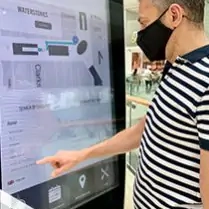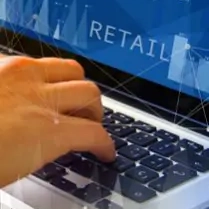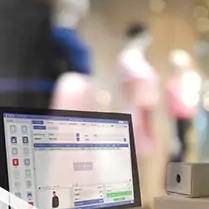
By now the concept of omni-channel or the word itself might not seem as strange as it first appeared to be. It is extremely rare to engage in a conversation today involving retail technology without encountering omni-channel used as a noun, an adjective, or even a verb. As challenging as it may seem for business owners to envision the benefits, for CEO’s the question is simple – how do I make it produce results for the business?
As a pioneer in this space we are delighted to share our knowledge of the subject acquired through several years of discussions we’ve had with retail leaders particularly since the time ‘omni-channel’ first appeared on the retail horizon. This domain knowledge includes the trends, the drivers, the business benefits, and the role of technology all within the context of omni-channel as highlighted by companies that are leading in the specific realms of their initiatives.
Omni-channel Initiatives in the Spotlight! Omni-channel has quickly become the norm for retailers who aspire to deliver the following benefits to their end customers through the adoption of this unified O2O strategy:
- Buy or reserve online and pickup in-store – Customers can reserve or buy items online and choose to try or buy them at the store. This drives traffic to stores and helps to upsell and cross-sell increasing the revenue per square foot.
- Endless Aisle – Allows you to see inventory across stores from any store. Place orders across stores for customers to pick up, or to be delivered. never saying ‘no’ to the customer
- Ship from Store – Ability to receive web orders directly to stores, and have them picked, packed, and delivered from the store. Particularly useful for slow-moving or aging inventory
- Inventory Visibility across Channels – Customers have to ability to check the in-store availability of items before leaving their homes
CEOs invest in Omni-channel strategies to achieve the below goals:
To grow revenue with existing customers: Customers shop and communicate with a brand on their own terms through various channels, often using six or more touchpoints before making a purchase such as a brand’s website, reviews, social media, and marketplaces. Retail CEOs broadly agree their organizations must deliver a consistent experience across all touchpoints. The experience could cover areas like consistent pricing, promotions, catalogues, loyalty programs, and member benefits. Channels are the arms and legs of the brand that bring the experience to the customer. This experience should be highly personalized, connected, and unified. Done right, this helps customers trust a brand and want to shop again.
To bring in new customers: Increasing adoption of smartphones and tablets has driven change in customer behaviour and expectations. The heightened connectivity enables a 24×7, 360-degree relationship between the customer and the brand that the customer will come to expect. Revenue growth for the retail industry is driven by the combination of online and web-influenced sales. However, retailers’ ability to capture this growth is dependent on the evolution of current operating models and technology to feature a seamless cross-channel shopping experience that allows online traffic to drive sales in brick-and-mortar locations.
To Improve inventory turn: Driving traffic online to the store is always a great idea as it allows customers to interact with the brand through people product, place, and promotion in a high experience environment. It also allows customers to browse and creates upselling and cross-selling opportunities. If deployed properly omni-channel technology also allows customers to choose products from any store and have them delivered as well as create an online shopping experience within a store. I am sure everyone will agree that doing returns and exchanges in stores is much easier than online, this is also an opportunity to engage positively with customers and help them shop more. all of these initiatives will help store inventory to move faster and as better data is available to re-stick smarter.
To optimize the channel mix and asset deployment: As the omni-channel strategy is implemented, if good data analysis is done, a lot of decision-making information will be available to the CEO to decide on the deployment of his/her assets. Data about customers buying preferences by channel/ by brand/ by location/ by time/ and all related to customer profiles. This will allow the CEO to decide on where the physical stores should be located, what brands they should carry, how many staff are required at what timings, what size of store as well as information on online traffic for the same parameters and the need for promotion across these channels.
The case for Omni-channel enablement – Retail leaders in the omni-channel movement are gaining a competitive advantage in the marketplace by providing high revenue customers the connectivity and service they demand.
Increased revenue from multi-channel shoppers: While 40% of consumers purchase more from retailers that provide a personalized shopping experience across channels, there is an exponential return on the budget you invest in personalization as retail CEOs who invest in personalization can realize upward of $20 in return for every dollar invested.
Omni-channel’s customer focus yields loyalty-based revenue: 65% of consumers have cut ties with a brand over a single poor customer service experience resulting in companies losing an average of $62 billion annually. Retailers who provide this exceptional experience can earn rewards worth approx. $823 million in incremental sales annually in the form of additional purchases, churn reduction, and word-of-mouth purchases over a 3 year period for a company with $1 billion in annual revenues.
Emerging trends become mainstream: Customer expectations fueling the omni-channel movement, especially with the advent of Covid-19 and the resulting lockdowns and other restrictions, particularly those on human interaction, has made it mainstream as trends in e/m-commerce, tablet, and smartphone usage, and social networking continue to proliferate.
Retail CEO’s KPIs to measure the progress of their Omni-channel retail business – As a general rule, CEOs need easy access to a few key performance indicators that allow them, at a glance, to monitor how healthy the business is at a given point in time. Business leaders need to keep up to date in real time (or as close as possible) so that they can have the actionable insights needed to make adjustments to their priorities. Some examples of important KPIs that retail CEOs should keep an eye on with their executive KPI dashboards are:
- Conversion Rate – the number of people interacting with the brand through the various channels v/s the number of individual purchases.
- Sales per square foot are calculated by dividing the net sales by the amount of sales space.
- Sales per employee/category – helps retail CEOs identify valuable sales data with reference to sales as per product category, sales per employee, average sales per transaction, and sales per shift of the day. It helps make better employment decisions and planning.
- Online traffic and foot traffic – Digital traffic is measured with the help of a POS system which indicates how many shoppers are visiting your online store. Foot traffic is fundamentally measured by physically keeping a track of every customer walking into your store or with the help of cameras.
- Inventory turnover – also known as Stock Turn, it refers to the times in a particular period you are selling the inventory and replacing it. It can be calculated by measuring the cost of goods sold by the average inventory.
In order to identify and track the right retail KPIs, retail CEOs need to invest in an advanced omni-channel retail management POS solution. We hope this information can help you move ahead in your strategic thinking by formulating, evaluating, or even implementing your own omni-channel strategies. Stay tuned to know more about enabling omni-channel strategy through technology and measuring the ROI for greater retail success.
Related articles:

The store of the future

Deliver a true Omni-channel Customer Experience through the Retail Store of the Future

Leveraging Technology to Drive Innovation in Retail

POS & CRM – A Perfect Match

How Does Mobile POS (mPOS) make the Modern Retailer’s Life Easy

Benefits of an innovative POS software for your retail business

4 keys to seamlessly deploy & monitor omni-channel promotions to increase retail revenues

5 Ways to Get Your Retail Business Ready for the Holiday Season
















